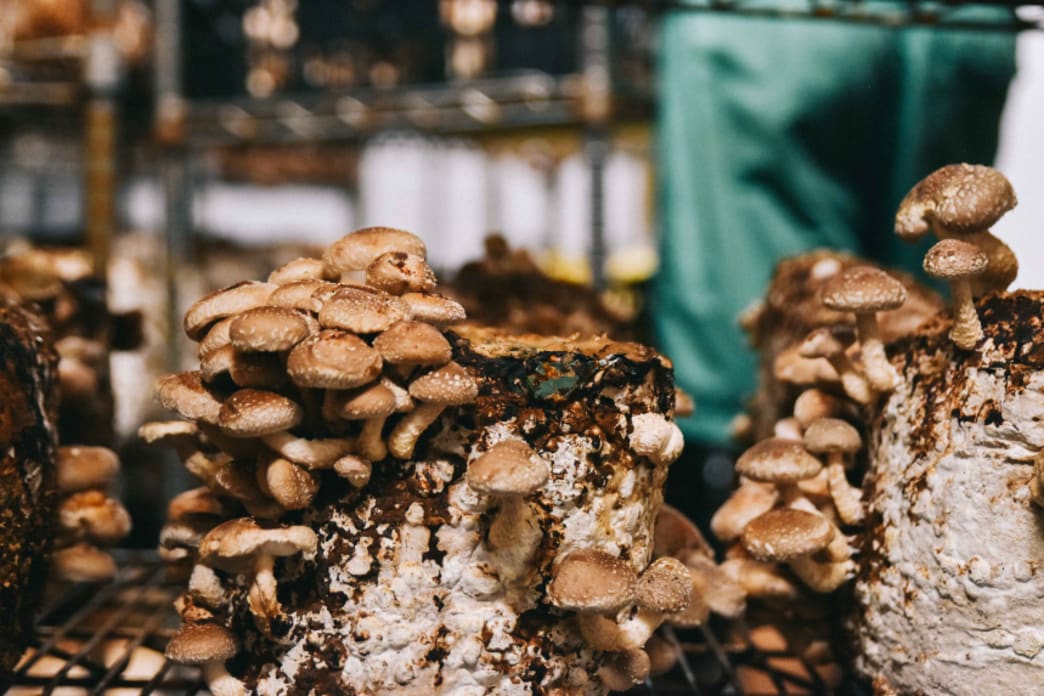Developing a mushroom incubator and a mushroom fruiting chamber or room are important pieces to a complete mushroom cultivation setup. Learn more now
A mushroom incubator and mushroom fruiting chamber are pieces to a successful mushroom farm. Having this functionality allows mushroom growers to engage in the process of mushroom incubation and mushroom fruiting, which are two primary stages of mushroom cultivation.
Learn about mushroom incubation and fruiting below. If you are a mushroom enthusiast that wants to take the next step in your mushroom growing journey, we have an online course for you that will help train you into a successful mushroom farmer. Learn all about this course, including the benefits and the syllabus, on this page of our website now.
Understanding the mushroom incubation process
After introducing the mycelium to the substrate during inoculation, comes the incubation process. Incubation is the point where you sit back, relax and let the mycelium grow out.
This part can be very exciting for mushroom growers because you can accumulate logs and then do nothing for a whole year after inoculation and the logs just do their thing. So incubation is a nice time where you just let the mycelium grow and it's all good. Large amounts of incubation at once can generate a lot of heat, so you may need some sort of cooling system. If you have a well-insulated building, you tend to not need heat even in the winter because the mycelium generates enough heat that it can kind of hold its own.
A big consideration for a mushroom incubator
A big consideration for incubation on mushroom farms is how long are we going to let our substrates sit in the incubation.
For instance, shiitake is the most cultivated specialty mushroom in the world. It is also one of the biggest time hogs to cultivate. Shiitake is typically in incubation for six to 10 weeks, whereas pretty much all the other specialty mushrooms like oysters, chestnuts, nameko, pioppino, and lion’s mane, are all growing in about 14 days in incubation. It's a very quick turnover for those species.
In terms of structuring the process of buying ready-to-fruit blocks or making their own, some mushroom farmers will buy shiitake blocks and bring them in because they're such a space and time hog. These people will grow their own oyster or lion’s mane blocks themselves, and once incubation is complete, the bags can be directly moved into the fruiting room or they can be placed in cold storage until you're ready to fruit them. You could build up a surplus of these blocks and then put him in a walk-in cooler and leave them there for three or four weeks until you need them in the fruiting room. After about four weeks the blocks will start fruiting on their own, so it's good to keep them in cold storage for a month at maximum.
You can see example of shelves used in a mushroom incubator in this video:
You can see in the video that on top of the shelves there is a material called coroplast. It’s corrugated, easy to clean, and sturdy. You will notice in the video that there is a space between each block so that there is airflow and the blocks do not overheat.
The video shows shiitake blocks in the incubation process. You can see the beginning stage where the mycelium is just starting to jump off. On a different shelf you will see fully-colonized blocks that are just starting to “popcorn”. Then there are some that have fully popcorned and have browned over. These shiitake blocks are ready to be fruited. We will first cold shock them by putting them in the walk-in cooler for 24 hours. Then they will be moved to the fruiting room.
We used plywood initially for the incubation room but we quickly noticed that the plywood would at times lead to splinters getting into the bag. You can also use metal shelving. We put tape on the shelf that has batch number, species, the date, and if there is any contamination being noticed.
Going from a mushroom incubator to the fruiting room
In the video above you will also see an example of a fruiting room. We also used coroplast for the fruiting room. You will notice an intake fan in the fruiting room and an exhaust fan. The intake fan runs constantly and the exhaust fan sends the air outside. There is also the misting line and pump, which is used to fog the room up. This is usually only on for one minute or one minute and a half every 15 minutes.
Want to learn how to develop your own mushroom fruiting chamber or mushroom fruiting room? Visit this page of our website, where you will find all the information you need and there will also be a helpful video.

